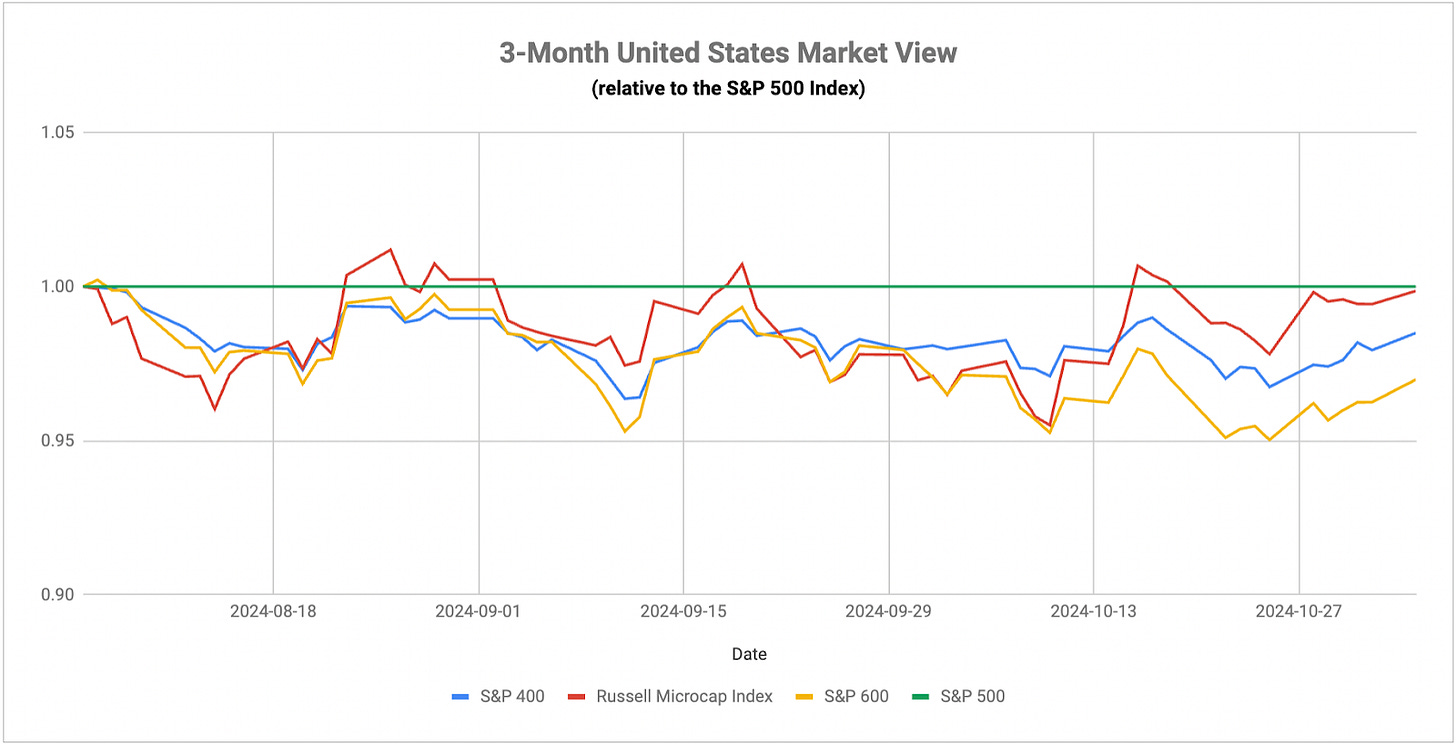The big question for the financial markets right is what’s going on with Treasuries? Since the September low, the 10-year yield is up about 70 basis points, even continuing to push higher in the face of data that should send yields lower. I think this at least started out with the markets unwinding some of the more dovish expectations of Fed rate cuts, but the move of the past few weeks is less understandable. Perhaps the markets were pricing in a greater likelihood of a Trump win and thus the inflationary impact of his tariff policies. Perhaps it has to do with the hundreds of billions of dollars of planned new Treasury issuance through the end of 2024 that’s currently having some trouble finding buyers. Perhaps it’s a lack of liquidity in the repo market. It seems like investors very much overestimated the return of inflation and sent yields far higher than they should have. I’m not discounting the possibility that inflationary pressures remain elevated for a while, but the market sure seemed to get ahead of itself here. That could lead to a potential scenario where yields collapse in a reversal of the recent bond correction.
The equity markets also seem to be having some second thoughts. Some of the Trump trades, which had been moving higher over the past couple of weeks, have begun to balance out again, yielding no clear sign as to which way the market is leaning at the moment. The VIX has moved higher lately, which generally isn’t surprising in the lead-up to major elections. The likeliest outcome regardless of who wins will be that heavy government spending will continue. Liquidity tends to be positive at the margins for risk assets and that tailwind will almost certainly exist for the foreseeable future. While different sets of sectors will outperform depending on who wins, the overall positive sentiment for equities seems to be fairly firmly in place for the time being, although the bond market may upend some of that momentum.
The other big event of the week will be the Fed meeting, where the central bank will almost certainly cut rates by a quarter-point without any real surprises. The one potentially impactful takeaway could be its stance on the labor market. At the last meeting, the Fed emphasized that it was pivoting its focus from inflation to economic health and the labor market. With inflation in check, it will be interesting to see if they have any particular take on the weak October non-farm payroll number. The underlying tone of Powell’s last post-meeting presser was that he sounded a bit concerned about the direction of the economy and wasn’t especially convincing when saying that risks were balanced. None of the headline data seems to suggest a major change of conditions since that moment, but his interpretation of the state of the jobs market could be telling.
It wouldn’t be a weekly recap without pointing out that NVIDIA is entering the Dow and replacing Intel. Swapping out one chip maker for another makes sense, but the traditionally stodgy index will be getting an accelerated dose of growth & AI exposure with this move. From an investor perspective, it’s worth mentioning that there’s far less money indexed to the Dow than there is to the S&P 500, so there’s much less potential for a fund trading related boost for the stock. The Dow gets a lot less attention today than it used to, but this change certainly brings it much further into the future than it was previously.
Keep reading with a 7-day free trial
Subscribe to The Lead-Lag Report to keep reading this post and get 7 days of free access to the full post archives.


